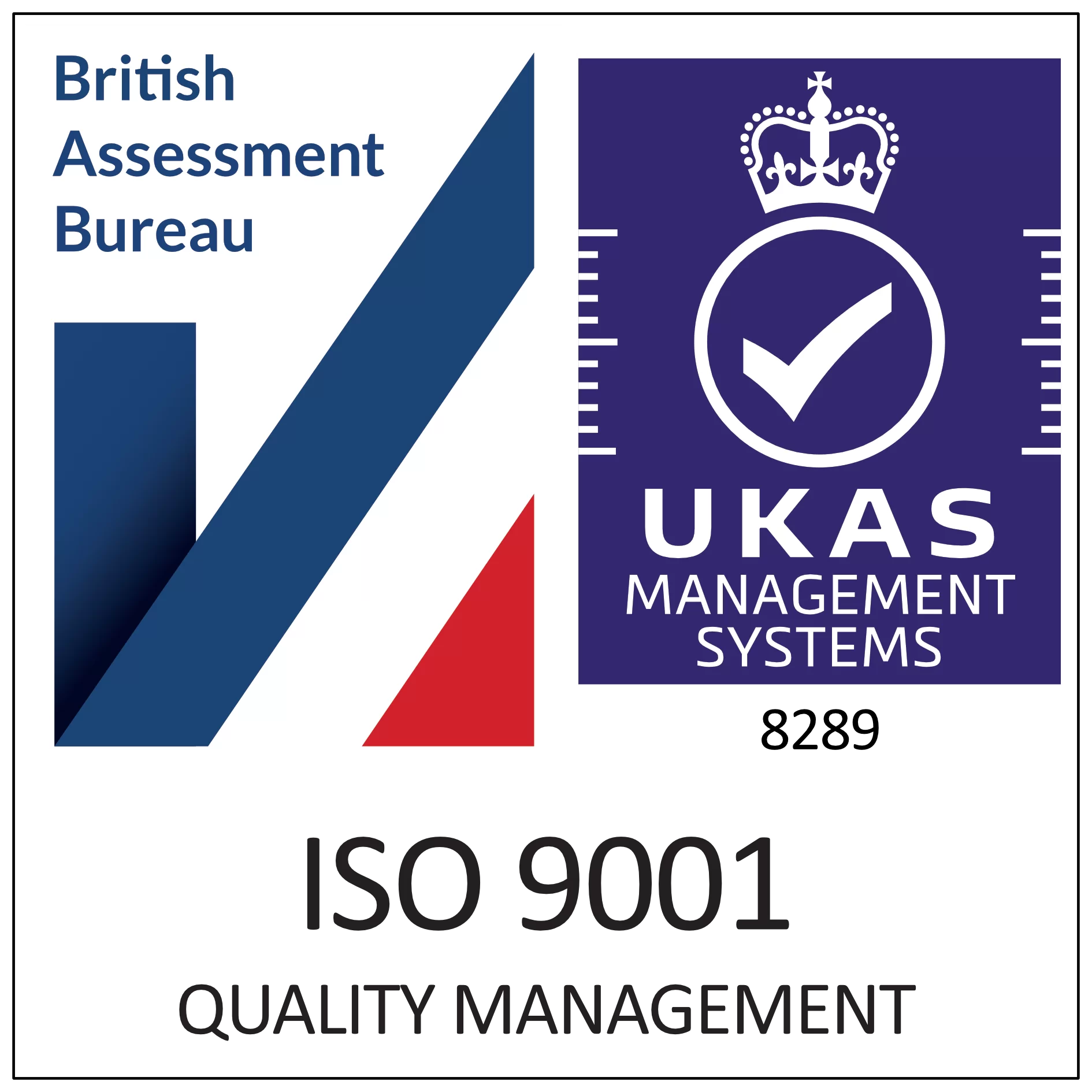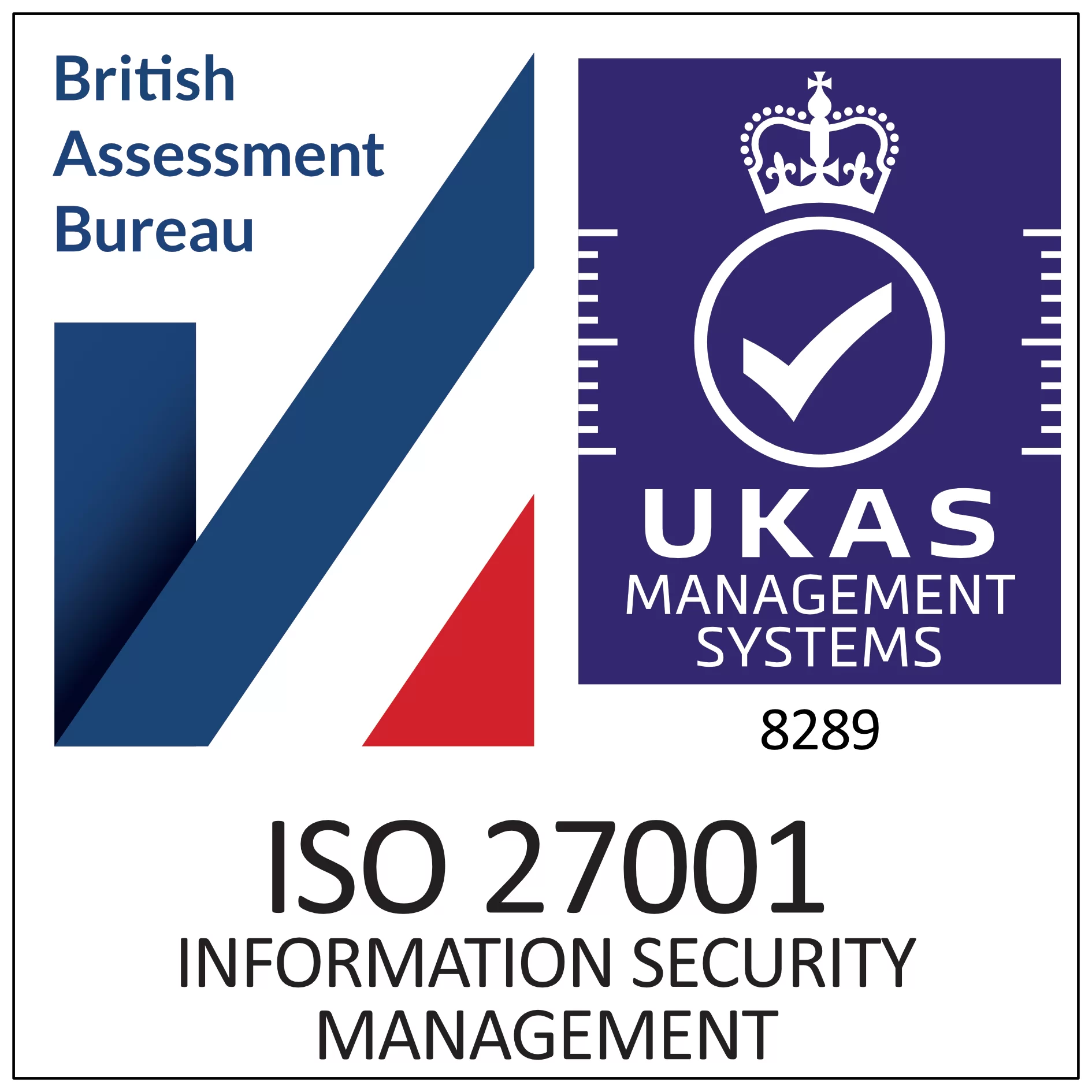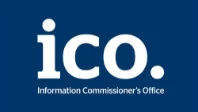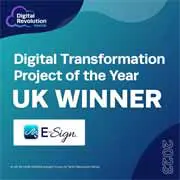Home | News & Insights |
How to Write an Offer Letter
Laura Cain
Marketing & Brand Manager
PUBLISHED
21st May, 2024
In order for a business to grow you will need to hire new employees to fulfil important roles within the company. Whether you have a dedicated HR team to handle this for you or you manage the paperwork of hiring new staff yourself, an important document you will need is an offer letter.
In this guide, we will be explaining how to write an offer letter, including the key elements you should include, to help make your employee onboarding process as seamless and efficient as possible.
First, What is a Job Offer Letter and Why is it Important?

A job offer letter is a formal document that a business sends to a prospective employee offering them a position following a successful application. It is usually sent after the candidate has completed one or more interview stages and has potentially been offered the job verbally via a phone call or email from the hiring manager. The job offer letter is extremely important as it will include the details of the employment offer for the candidate, such as the salary and start date, and is a chance for the employee to ensure that they are happy with the offer, before they accept or reject the offer.
What Should be Included in an Offer Letter?
There are several core components that typically make up a professional offer letter, these include:
1. Job Title and Description
You may want to start the letter with a congratulatory message for successfully completing the application stages and being offered the position. This is optional but whether you decide to include it or not, you should always state the candidate’s job title and a brief description of the role close to the beginning of the letter.
2. Start Date
Another key part that is commonly added to the beginning of an offer letter is the start date. During communications with the candidate, you will likely have discussed their availability for when they might be able to start their new position, such as if they have a notice period at their current place of employment. Following this there will be a proposed date agreed upon for the employee to take up their role.
3. Employment Type and Work Schedule
The document should specify whether the employment is full-time, part-time, temporary, or permanent. In addition to the type of employment, you should also include a work schedule detailing the regular working hours or shifts that the employee will be expected to follow. If their hours will vary, the letter should include how they can find or arrange their expected working hours once they start. This includes any remote or hybrid schedules if applicable.
4. Salary and Compensation
The candidate will need to be clearly informed of the salary they will receive in their new position, including any bonuses, commission, or other monetary benefits they are entitled to.
5. Reporting structure
You should include relevant information regarding who the employee should report to, and that person’s position within the organisation.
6. Employee benefits
Information about any available benefits should be provided to the employee such as company pension, holiday entitlement and pay, health insurance, schemes or discounts, paid time off, etc.
7. Terms and conditions
Be sure to provide any specific terms, conditions or requirements that are relevant to the employee starting their role. Common examples include a probationary period, nondisclosure agreements, and pre-employment checks (such as satisfactory references).
8. Confidentiality, Privacy, and Company Policies
An offer letter should include an overview of the business policies and expectations surrounding confidentiality, privacy, code of conduct, and other important guidelines such as termination conditions. This can be a brief overview at this stage, as further company policy information will often be covered in the employee handbook and onboarding process.
9. Acceptance Deadline
Not all offer letters include an acceptance deadline but it can be beneficial, particularly if you need to fill a position quickly. If this is the case, you can add a date by which you need the candidate to respond to the offer. A typical timeframe is roughly a week after the position has been offered.
10. Contact Information
The contact information of the hiring manager or point of contact for the candidate is important to include, this will allow them to contact the business should they have any questions about the offer, employment details etc.
11. Signature
Offer letters should conclude with a space for the candidate to provide their signature, confirming their agreement to the contents of the document. The letter should also be signed by the relevant representative or hiring manager.
What Legal Factors Need to be Considered in an Offer Letter?
There are three significant legal factors that you should keep in mind when writing an offer letter:
- An accurate statement of the terms and conditions of employment
- Unintended contractual obligations
- At-will employment details
To ensure that you prevent any complications, you should avoid language that might lead to any unintentional legal obligations. This means that you don’t want the offer letter to imply that you’re offering an indefinite period of employment to the candidate if that is not the case.
Therefore, it’s important to include details about at-will employment if applicable, and make it clear that the organisation has the right to terminate the employment at any time for a lawful cause. The employee may also decide to end the employment by quitting their position. The term ‘at-will’ refers to the relationship between the business and the employee, which can be ended at any time by either party.
Top Tips for Writing an Offer Letter
Offering a job to the right candidate might seem like a simple process on the surface, you simply create the offer letter, have it approved by the necessary managers, and send it to the individual. However, each of these steps should be taken with careful coordination, spending plenty of time to ensure that all the correct information is included in a clear and concise way. The below tips can help you streamline your job offer process.
- Establish important job details before you start hiring.
- Provide the job offer over the phone before sending the formal letter.
- Create and save an offer letter template to save time during future hiring.
- Send the document digitally for faster and more efficient processes and eSignature
How can eSign Help?
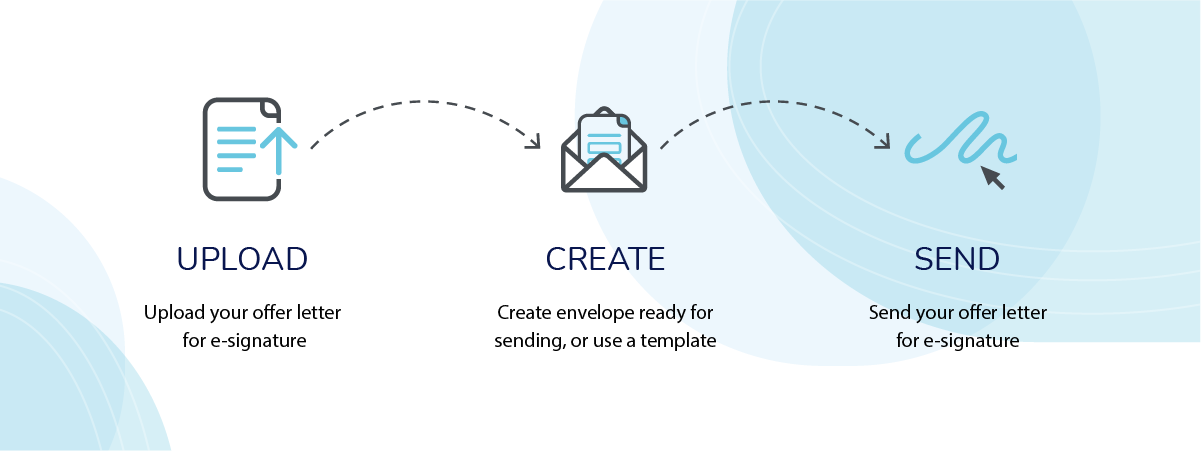
As an industry leading electronic signature and digital document solutions provider, eSign is committed to supporting businesses with their employment and HR processes. Traditional paper-based offer letters can slow down recruitment, through the candidate either needing to print, sign, and scan the document or post it back to the business once adding their signature. By using the eSign platform you can create, sign, and send offer letters to candidates all within a few clicks, saving your organisation valuable time and money.
In addition, you can save your own offer letter template within eSign so you can reuse it whenever you’re hiring, significantly optimising the process and minimising the time needed to create and send offer letters. We also have a selection of pre-built templates that are available for businesses to use. This allows you to save time on various document processes with a structured format that can be customised to suit your organisation and include relevant details for the recipient.
eSign is highly beneficial for HR departments and recruiters who are looking to streamline operations and reduce their reliance on outdated and inefficient paper methods of working.
Conclusion
Now that you hopefully have a greater understanding of how to write an offer letter, why not ensure that your hiring and onboarding processes are as efficient as possible with eSign? Our platform is designed to make digital document management and eSignature capture as simple as possible for businesses across a wide range of industries. Also, our solutions are cost effective and tailored to the specific needs of your organisation, whether you’re a large scale enterprise that has ongoing recruitment requirements, or a new business with a smaller number of document needs across employment and HR.
Get started with eSign today by registering for our 14-day free trial and experience the invaluable benefits the platform can offer your organisation. If you have any specific questions or queries don’t hesitate to contact us, our friendly team of specialists are on hand to support you with your requirements and seamlessly complete your digital transformation journey.
 Facebook
Facebook
 X (Twitter)
X (Twitter)
 LinkedIn
LinkedIn


